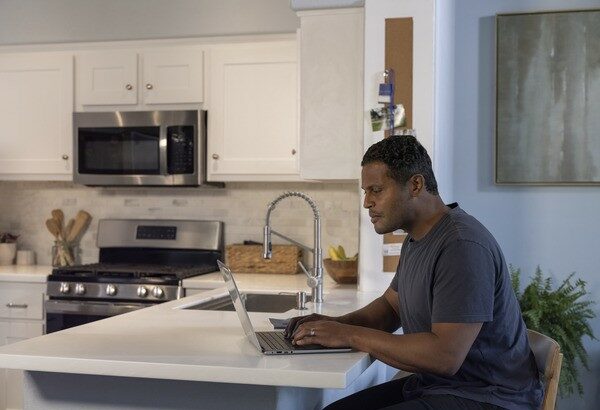
The rising popularity of smartphones is playing a role in the growth of home security systems. Now, security systems don’t just trip an alarm if an intruder comes through the door anymore, they enable homeowners to watch live streaming video of their homes, turn on lights and disarm the system – all from their smartphones.
Smartphone integration and high-speed Internet connections will contribute significantly to the growth of security systems. By 2020, 30 percent of all households will likely have a security system. That’s a 12 percent spike in home security systems in 10 years.
“The technological advances that we’ve seen in smartphones, apps and video capabilities have brought a whole new clientele to the home security industry,” says Joe Branca, senior smart home analyst for Strategy Analytics, a company that provides research and consultations to security companies.
Branca says these five digital trends are currently dominating the home security industry:
![5 Digital Trends That Are Dominating Home Security [Infographic]](https://blog.nationwide.com/wp-content/uploads/2016/02/digital-security-infographic-4_4.png)
1. Video monitoring
More and more home security systems have a video component built in. Cameras deter 40 percent of burglars from entering a home, according to one recent study.
Cameras placed throughout a home can be controlled via smartphone apps. A homeowner can watch live streaming video while at work, zoom in for a closer look at something suspicious and rotate the camera to get a better look at something across the room.
2. Smartphone notifications
With smartphone integration, homeowners are generally able to visually check on their home anytime, anywhere. In addition, homeowners can set up event notifications. For example, when a motion sensor is tripped, an alert is sent to the owner’s phone. The owner can click on the alert and automatically see live streaming video from the camera closest to the motion sensor.
“Our experience is that parents love this feature,” Branca explains. “When the kids come home from school and come through the front door’s motion sensor, an alert is sent to Mom’s phone. She can watch them come in via live video, or, if she gets the alert a few minutes late, she can access stored video.”
3. Customizable settings
Home security systems aren’t one-size-fits-all anymore. Homeowners can customize their systems to fit their lifestyle by customizing various settings. For example, users can have the lights come on in the living room as soon as the alarm is deactivated. Homeowners can customize settings for certain times of the day or when on vacation.
“It’s customization that fits every lifestyle,” Branca says. “It’s another digital feature that makes home security more attractive today.”
4. Home controls
In a rush to get to work, a homeowner could forget to lock the door or adjust the thermostat. Rather than turning around and heading back home to check, homeowners can make adjustments from their smartphone.
Consumers want more control over individual systems, like thermostats, locks and lights, Branca says.
“To be able to flip a lock while at work or turn off the kitchen lights that are still on from this morning’s breakfast, seems like a luxury, but it’s one of the most in-demand features that we see,” he says.
5. Location-based automation
The GPS in a smartphone isn’t just great at providing directions; it can trigger automation in a home security system, too. A user can set up his system for location-based automation. For example, when a user is within five miles of his home, the alarm can be automatically shut off and lights turned on.
“Again, this feature allows for customization,” Branca says. “It’s another way for users to make a security system work in their lives, not the other way around.”
Digital features in the future
Digital trends are only growing. Branca says water management and occupant monitoring are just two digital features that are in the works.
In the near future, security systems could alert owners of a leaking pipe or switch on sprinklers at scheduled times. Sensors are also being developed to monitor people in the home. For example, if an elderly person falls, a sensor can detect it and call for help.
“Digital features will only grow in home security systems,” Branca says. “The possibilities are limitless.”



